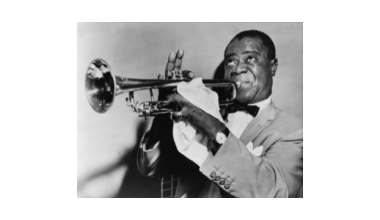If you’ve ever watched a movie, show, or played a video game, you’ve heard an OST. OST stands for Original Soundtrack, and it’s the music created just for that story. Imagine watching a romantic scene without soft music or an action movie without thrilling beats—it wouldn’t feel the same, right?
Great OSTs make us feel emotions, connect us to characters, and even bring back memories of those moments. This blog will show you how to make the best OST, even if you’re new to music creation. We’ll keep it simple and fun!
Chapter 1: What Makes the Best OST?
Music That Matches Emotions
The best OST makes people feel the story. Whether it’s love, sadness, or excitement, the music adds life to what’s on the screen. For example:
- In a love story, soft violins or a soothing guitar make us feel romance.
- In a scary movie, sudden beats or eerie sounds give us goosebumps.
Themes for Characters or Moments
Have you noticed how some characters have their own music? Think of the dramatic “Dun-Dun” from the show Law & Order. A unique theme for characters or moments helps viewers remember them.
Music That Stays in Our Hearts
The best OSTs are unforgettable. Think of songs like “My Heart Will Go On” from Titanic or “Tum Hi Ho” from Aashiqui 2. These songs stayed with us because they touched our hearts.
Chapter 2: How to Start Making Your OST
Step 1: Understand the Story
Before making music, learn about the project. Is it a romantic movie, a scary game, or an emotional series? Talk to the director or writer about the mood they want.
Step 2: Find Your Inspiration
Every great OST comes from a spark of inspiration. Watch movies with amazing soundtracks or listen to famous OSTs to get ideas.
Step 3: Choose Your Style
- Orchestra: Great for epic stories.
- Piano and Strings: Perfect for emotional moments.
- Electronic Beats: Ideal for fast-paced action or modern themes.
Step 4: Use Good Tools
You don’t need a fancy studio. Start with simple tools:
- A laptop with music software like FL Studio or GarageBand.
- A good microphone for recording.
- Instruments you can play or sample online.
Chapter 3: Tips for Making the Best OST
1. Play with Different Instruments
Don’t stick to one sound. Try mixing instruments like tabla with violins or flute with drums. Experimenting creates magic.
2. Keep It Simple
Sometimes, less is more. A single piano piece can be as powerful as a full orchestra. Think of the iconic tune from Pirates of the Caribbean—simple yet unforgettable.
3. Match the Timing
Make sure your music flows with the scenes. For example:
- A slow tune for a sad scene.
- Fast beats for a chase scene.
4. Ask for Feedback
Share your music with friends, family, or the project team. Honest feedback will help you improve.
Chapter 4: Tools You Can Use
Creating an OST doesn’t have to be expensive. Here are tools to get started:
- DAWs (Digital Audio Workstations): Software like FL Studio or Ableton Live lets you create music easily.
- AI Mastering Tools: Platforms like Deliver My Tune can polish your tracks and make them sound professional.
- Free Sound Libraries: Websites like Freesound or Soundtrap have free samples you can use.
Chapter 5: Why a Good OST is Important
Makes Stories Memorable
Great OSTs make scenes unforgettable. Remember the emotional background music in Kabhi Khushi Kabhie Gham? It made us cry, laugh, and smile with the characters.
Helps Build Characters
A hero’s theme music gives us hope, while a villain’s theme warns us of danger. Good music gives characters a personality.
Connects with Audiences
When music is good, people hum it long after watching. This connection makes the project more popular.
Chapter 6: Trends in OST Creation
1. Mixing Cultures
Blending Indian tabla with Western piano or African drums with electronic beats is trending. It makes the music unique and exciting.
2. Use of AI in Music
AI tools now help with composing, mastering, and even suggesting what sounds better. It’s fast and budget-friendly.
3. Interactive Soundtracks
For video games, music changes with gameplay. If a player is in danger, the music gets intense, making the experience thrilling.
Chapter 7: Promoting Your OST
Making the best OST is just the start; sharing it with the world is equally important.
Post clips of your work on Instagram, YouTube, or TikTok. Behind-the-scenes videos of how you made the music can attract fans.
Distribute Everywhere
Use music distribution platforms like Deliver My Tune to release your OST on Spotify, Apple Music, and other streaming platforms.
Build an Online Portfolio
Create a one-page website or portfolio to showcase your work. It’s easy with services like Deliver My Tune’s Artist Portfolio tool.
Chapter 8: Challenges and Solutions
Challenge: Tight Deadlines
OST projects often have deadlines. Plan your work, set daily goals, and avoid rushing at the last minute.
Challenge: Budget Constraints
You don’t need a big budget. Use free or affordable tools and focus on quality.
Chapter 9: Learning from the Best OSTs
Bollywood
- Dilwale Dulhania Le Jayenge (DDLJ): Emotional songs like “Tujhe Dekha To” made it a classic.
- Sholay: Its background score still gives us chills.
Hollywood
- The Lion King: Songs like “Hakuna Matata” brought smiles worldwide.
- Interstellar: The piano-heavy score made space feel emotional.
Gaming
- Final Fantasy: Each game’s soundtrack is iconic.
- The Legend of Zelda: Its adventurous tunes are legendary.
Conclusion: Start Making Music Today
Creating the best OST may seem tough, but it’s all about starting small and improving step by step. Use the tools and tips here, stay creative, and don’t be afraid to experiment. Remember, great music tells stories without words.
Related Articles:
For further reading, explore these related articles:
For additional resources on music marketing and distribution, visit DMT RECORDS PRIVATE LIMITED.






